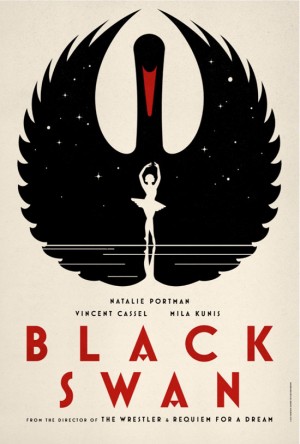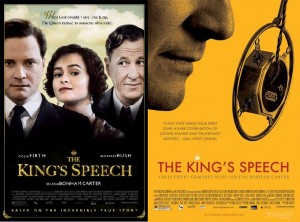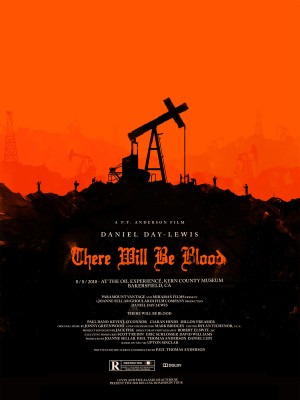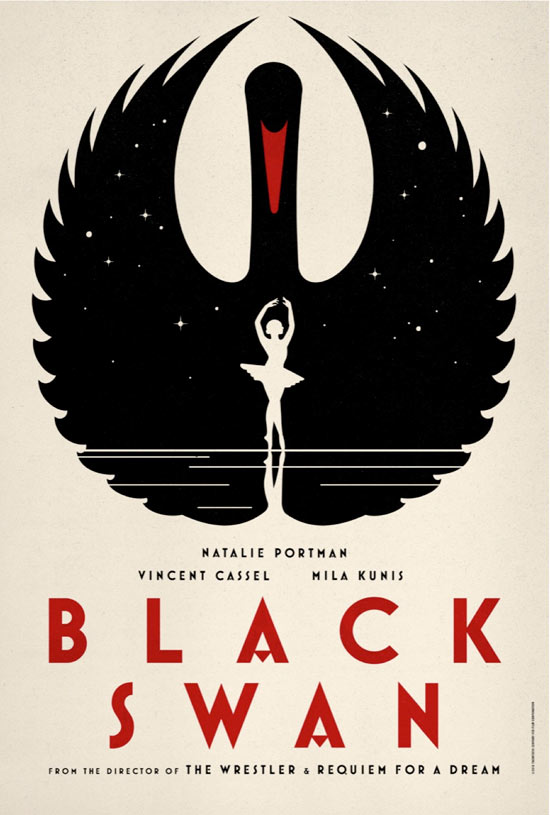Walking through the halls of the nearest movie theater, I can’t help but feel like I’m being watched. Stony gazes, serious grimaces and a set of steely eyes stare out at me. It’s not the guys behind the counter grumbling as they serve my half-cooked popcorn. No, it’s the movie posters, plastered in their plastic cases peering out with photoshopped faces. Despite some enthusiastic grinning, the poster for “Due Date” does not entice me, only convincing me that the movie isn’t worth my time. “Morning Glory”s cheerful sips of coffee put me to sleep, and the slick shots of Denzel Washington’s retouched face makes “Unstoppable” seem anything but.

Some time ago, we must have lost sight of what a great movie poster is. Now, posters bank on the star image, that recognizable face that urges us to see the movie simply because they’re in it. Zach Efron’s affront to cinema, “Charlie St. Cloud,” also provided a clear glimpse into the vast artistic abyss of terrible contemporary movie posters. Efron, looking a strange mix of perplexed and smug, gazes wistfully in the top half of the poster. The bottom half features a stock-photo-esque shot of two people standing on a pier, staring into the sun, an activity that, much like this poster, could cause permanent eye damage.
But beyond the standard studio fare, even art house films like “Black Swan” and “I’m Still Here” refuse to see the potential beauty in the promotional poster, and instead toss out close up shots of heavy makeup and frazzled beards, respectively. How is Natalie Portman in creepy eye shadow supposed to invite or intrigue me? If anything, the poster is repelling. Her maniacal gaze drives us away, not towards her apparent madness.

Yet while the domestic poster of “Black Swan” fails, the international one-sheets for the film are a stroke of brilliance. They show an illustrated ballerina shadowed by a giant swan, its black wings spread like an angel of death. A different poster is an art deco, tri-colored ballerina, sketched in mid-pose, while strips of black, red and white trail from her outstretched arms like feathers blown off in a strong gust wind. They harken back to the days of Saul Bass, the genius graphic designer and artist whose collaborations with Hitchcock gave us the masterful “Vertigo” and “Psycho” posters.
But these posters aren’t hung in domestic theaters, perhaps out of fear that audiences won’t recognize a film if they don’t know who’s in it. Instead, we get more of the same style. The “floating heads” poster, long an industry staple, has made a roaring comeback. Take “The King’s Speech,” whose poster is a bland, boring lineup of the major stars. Colin Firth and Geoffrey Rush, the two stars of the film, stand at the edges of the forest green frame, their faces half cut off, while front and center is the most marketable star to American audiences: Helena Bonham Carter, smiling wryly in period dress. The poster screams “Lifetime movie,” not “Oscar-contender.” Maybe this is why the Weinstein Company, the studio who approved the abomination, produced a second, far superior poster with Colin Firth’s tense lower jaw aligned with a retro microphone against a yellow-hued background. It is, undoubtedly, a better poster, focusing on the major theme of the film instead of banking on the star power of the actors and actresses involved.

Ultimately, it’s these posters which tap into something eternal that stand the tests of time. Would “Jaws,” a marketing coup of a poster, be as memorable if it featured Richard Dreyfuss or Robert Shaw? Not to demean Shaw or Dreyfuss, both prolific actors in their own right, but there is something terrifyingly timeless about the “Jaws” one-sheet. Its iconic shark, looming in the foreground with a gaping jaw lined with dagger-like teeth, plays off the primal fear of that which lurks beneath. Compare that to the poster of the recent horror reboot “The Nightmare on Elm Street,” which shows the dream killer Freddy Kruger twiddling his razor-lined thumbs menacingly over the tagline “Welcome to your new nightmare.” If you couldn’t remember the poster (or the movie for that matter), you are forgiven.
Good posters still exist today of course. But they are hidden from view, issued as secondary designs weeks later. “Buried,” the film about Ryan Reynolds trapped in a coffin for 90 minutes, had a beautiful poster in the same style of Bass’ work. In the poster, Reynolds’ leg spins off into a box shaped pattern that envelops him. Just a cursory glance at the poster sends chills of claustrophobia down your spine. Yet this poster wasn’t the standard issue. The original poster shows Reynolds in a box in the bottom-left corner of the frame, surrounded by quotes from positive reviews of the film pressing down on him. How fitting that Reynolds is nearly crushed by marketing.

If only we didn’t have to dig to find these gems. If only Chloe Moretz’s curled and blood-soaked body was the primary poster for “Let Me In” instead of one of a snow angel with blood splotches on the edges of the frame. If only there were less of “Yogi Bear” and “Tangled,” two animated films with CGI characters clogging up the space.
We need more of Oly Moss, the artist whose gorgeous posters grace the 2010 Rolling Roadshow, as well as other art displays. His posters, in striking colors, capture the essence of the films, such as the oil rig as a cross for “There Will Be Blood” or an optical illusion flipped Hitler that morphs into Charlie Chaplin for “The Great Dictator.”
We need more of “Buried” and “Black Swan”s haunting international posters and less of “Due Date.” Otherwise, those blank eyes will keep watching from the poster frames. Shouldn’t we be watching them?


One Comment on “The Lost Art of the Movie Poster (And How We Can Find It)”